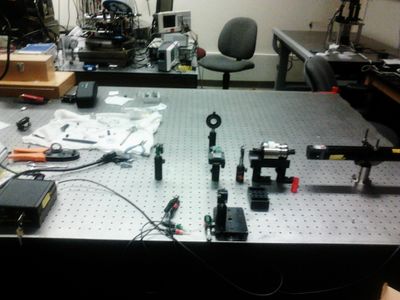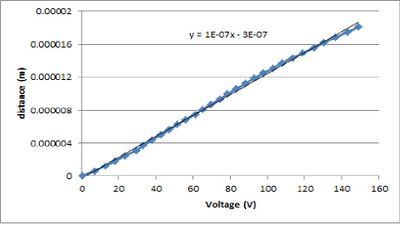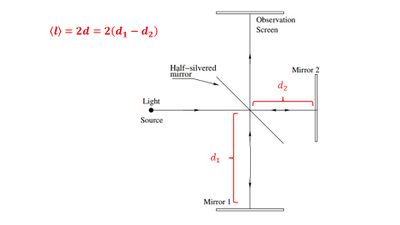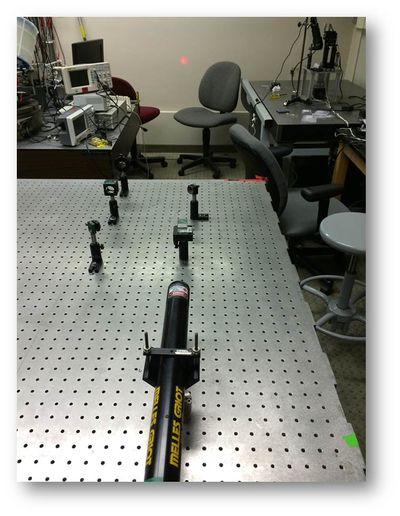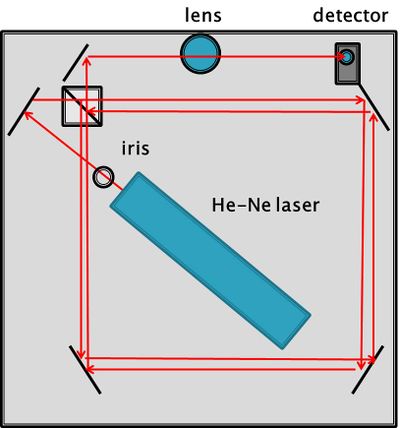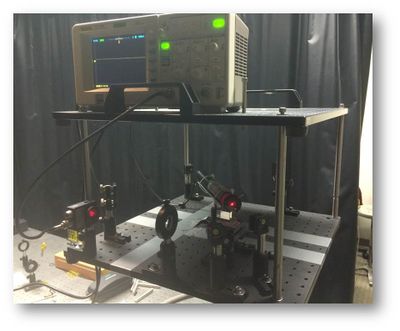Difference between revisions of "Interferometers"
| (4 intermediate revisions by 2 users not shown) | |||
| Line 24: | Line 24: | ||
[[Media:How_Does_a_Mach-Zehnder_Interferometer_Work?.pdf]] | [[Media:How_Does_a_Mach-Zehnder_Interferometer_Work?.pdf]] | ||
| − | [http://www.phy.davidson.edu/stuhome/cabell_f/diffractionfinal/pages/michelson.htm | + | [http://www.phy.davidson.edu/stuhome/cabell_f/diffractionfinal/pages/michelson.htm The Michelson Interferometer] |
| + | |||
| + | |||
| + | Some more interesting uses for the Michelson and Mach-Zehnder is to determine the index of refraction for various material. More so, the Michelson can actually find the coherence length of a laser in a different way, one can observe the visibility as one changes the distance of one of the arm lengths of one of the mirrors. For instance as the arm length, d, is increased the intensity can be recorded by a laser power meter and can then directly determine the visibility of light. Once this has been completed one will need to then determine the modes of the laser within this distance and can then determine the coherence length by relating it to the n-mode laser and solve for L, the coherence length. | ||
| + | |||
| + | The Michelson can as well be used to determine the index of refraction, n, of a material. One would need to place an object within the path of one of the beams and as the angle is changed, theta,fringes should begin to appear or disappear, N. Now in order to find n, one also needs to know the wavelength f the light source, lambda, and the thickness of the material t; | ||
| + | n=[(2*t-N*lambda)*(1-cos(theta))]/[2*t*(1-cos(theta))-N*lambda] (see equation (15) in link below) | ||
| + | [[Media:Michelson_Interferometer_Lab_Manual.pdf]] | ||
| + | |||
| + | One can also use the Mach-Zehnder to determine the index of refraction, n, of a material but in this case one can choose to look at a gas rather than a solid as was done with the Michelson. Just place a vacuum tube with clear lenses on each end and watch the fringe count, N, as the pressure is increased. The equation for n is; | ||
| + | n=[(N*lambda)/(2*l*deltaP)]*(deltaP)+1 | ||
| + | where lambda is the wavelength, deltaP is the change in pressure, and l is the length of the vacuum tube. One should see a linear growth of the index of refraction as the pressure is increased | ||
Latest revision as of 11:14, 11 January 2024
The goal of the spectroscopy project was to create a Michelson, Mach-Zehnder and Sagnac Interferometer. Each setup utilized a 632.8nm Helium-Neon laser.
In order to reduce fringe-drift, the Michelson interferometer employed both an optical iris and an optical isolator. The setup of the Michelson interferometer is shown in Figure 1. The Michelson interferometer was used to measure both the "voltage-to-expansion" ratio of a PZT and the coherence length of the He-Ne laser.
To measure the "voltage-to-expansion" ratio, the PZT was wedged in the track of he adjustable mirror. By increasing the voltage across the PZT and simultaneously counting the number of fringes that passed an arbitrary point on the projection screen, it was possible to measure the expansion distance of the PZT using the relation d=m*lambda/2. Multiple measurements were recorded and plotted in Figure 2. The slope of the graph indicates the expansion rate of the PZT is 100nm/Volt.
To measure the coherence length of the He-Ne laser, mirror 1 was gradually moved backwards until the interference pattern was no longer visible. The coherence length <l>, is given by the relation <l>=2*d, where d is the difference in length between the arms of the interferometer (Figure 3). The coherence length was determined to be 78cm.
The mach-zehnder interferometer setup is shown in Figure 4. As with the Michelson interferometer, an optial iris was employed to minimize outside noise. However, the optical isolator proved unnecessary with the Mach-Zehnder interferometer as no fringe drift was observed.
The Setup of the Sagnac interferometer is shown in figure 5. To rotate the interferometer, it was placed on a stool. The power source and digital oscilloscope were placed on another platform above the interferometer (Figure 6).
The intended goal with the Sagnac interferometer was to verify the wavelength of the He-Ne laser. This could be accomplished by the relations z=(4*omega*A)/(lambda*c) and P(t)=(Pin/2)(1+cos(z(t)). Here z is the phase-change, omega is the angular velocity of the rotating platform, A is the area enclosed the arms of the interferometer, and P(t) is the photocurrent.
Due to outside noise, it was not possible to obtain a clean measurement of the photocurrent. In order to reduce noise, future experiments might include a lock-in amplifier.
Media:How_Does_a_Mach-Zehnder_Interferometer_Work?.pdf
Some more interesting uses for the Michelson and Mach-Zehnder is to determine the index of refraction for various material. More so, the Michelson can actually find the coherence length of a laser in a different way, one can observe the visibility as one changes the distance of one of the arm lengths of one of the mirrors. For instance as the arm length, d, is increased the intensity can be recorded by a laser power meter and can then directly determine the visibility of light. Once this has been completed one will need to then determine the modes of the laser within this distance and can then determine the coherence length by relating it to the n-mode laser and solve for L, the coherence length.
The Michelson can as well be used to determine the index of refraction, n, of a material. One would need to place an object within the path of one of the beams and as the angle is changed, theta,fringes should begin to appear or disappear, N. Now in order to find n, one also needs to know the wavelength f the light source, lambda, and the thickness of the material t;
n=[(2*t-N*lambda)*(1-cos(theta))]/[2*t*(1-cos(theta))-N*lambda] (see equation (15) in link below)
Media:Michelson_Interferometer_Lab_Manual.pdf
One can also use the Mach-Zehnder to determine the index of refraction, n, of a material but in this case one can choose to look at a gas rather than a solid as was done with the Michelson. Just place a vacuum tube with clear lenses on each end and watch the fringe count, N, as the pressure is increased. The equation for n is;
n=[(N*lambda)/(2*l*deltaP)]*(deltaP)+1
where lambda is the wavelength, deltaP is the change in pressure, and l is the length of the vacuum tube. One should see a linear growth of the index of refraction as the pressure is increased
